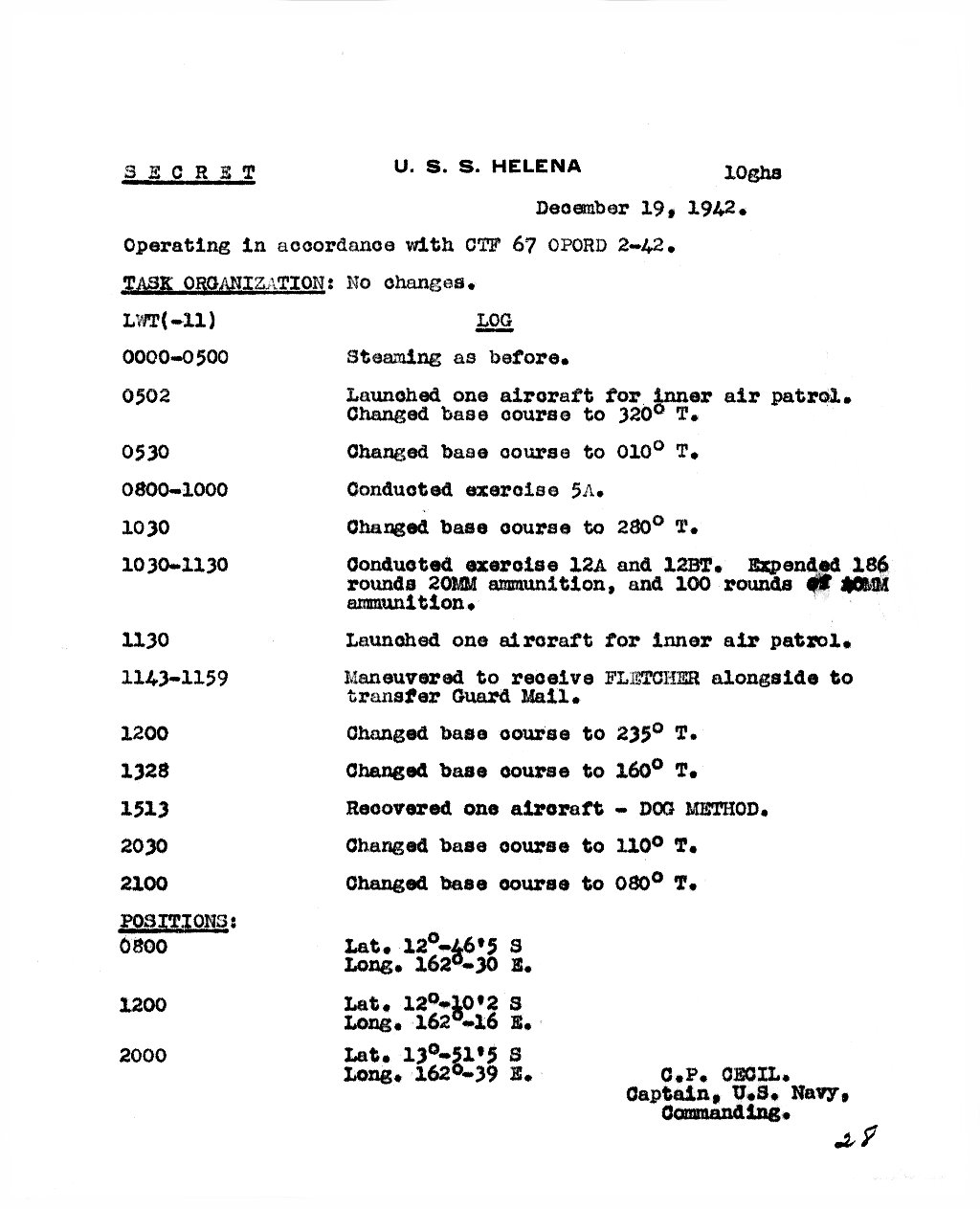


USS Helena War Diary December 1942
Page 3 of 3 pages

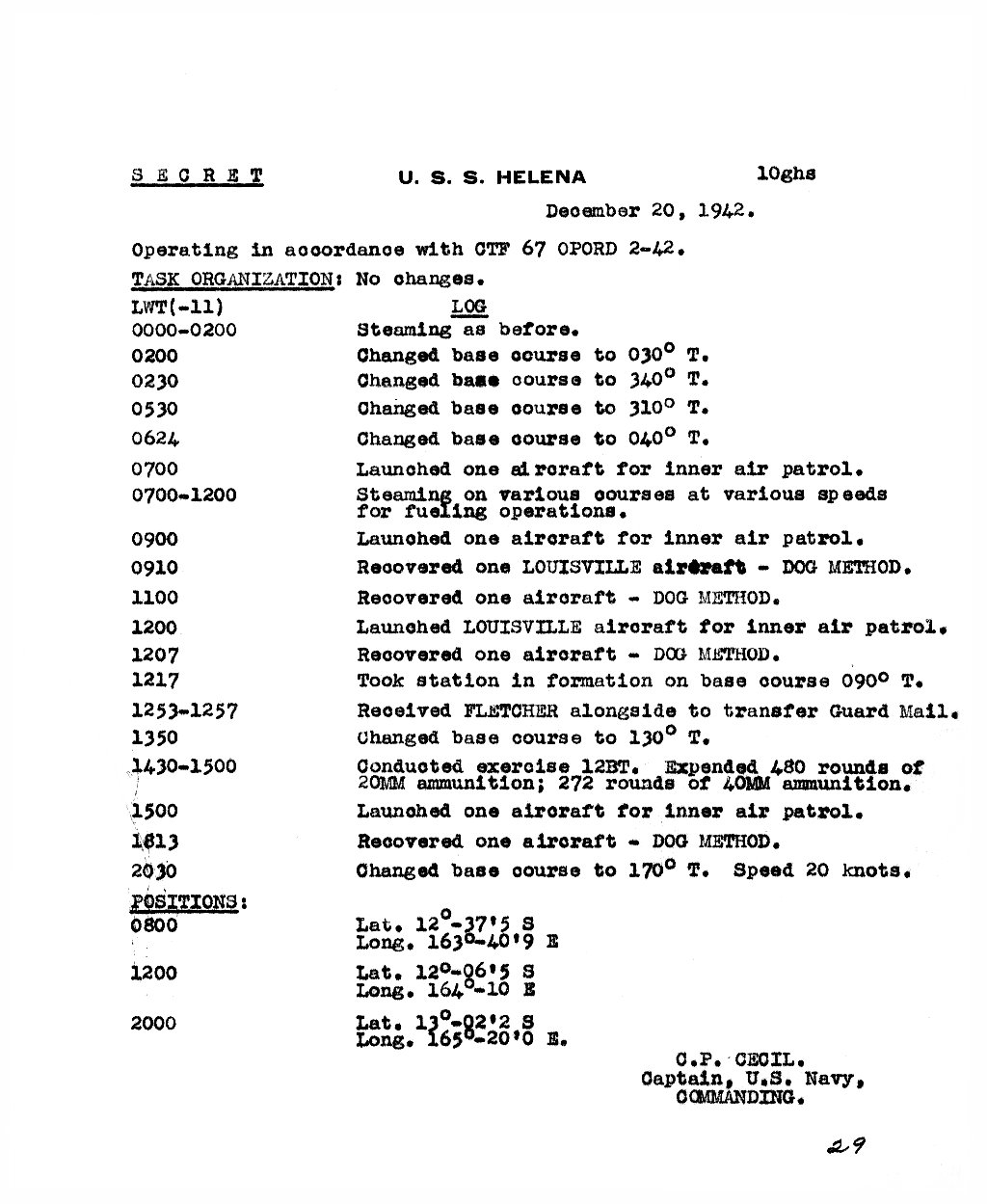
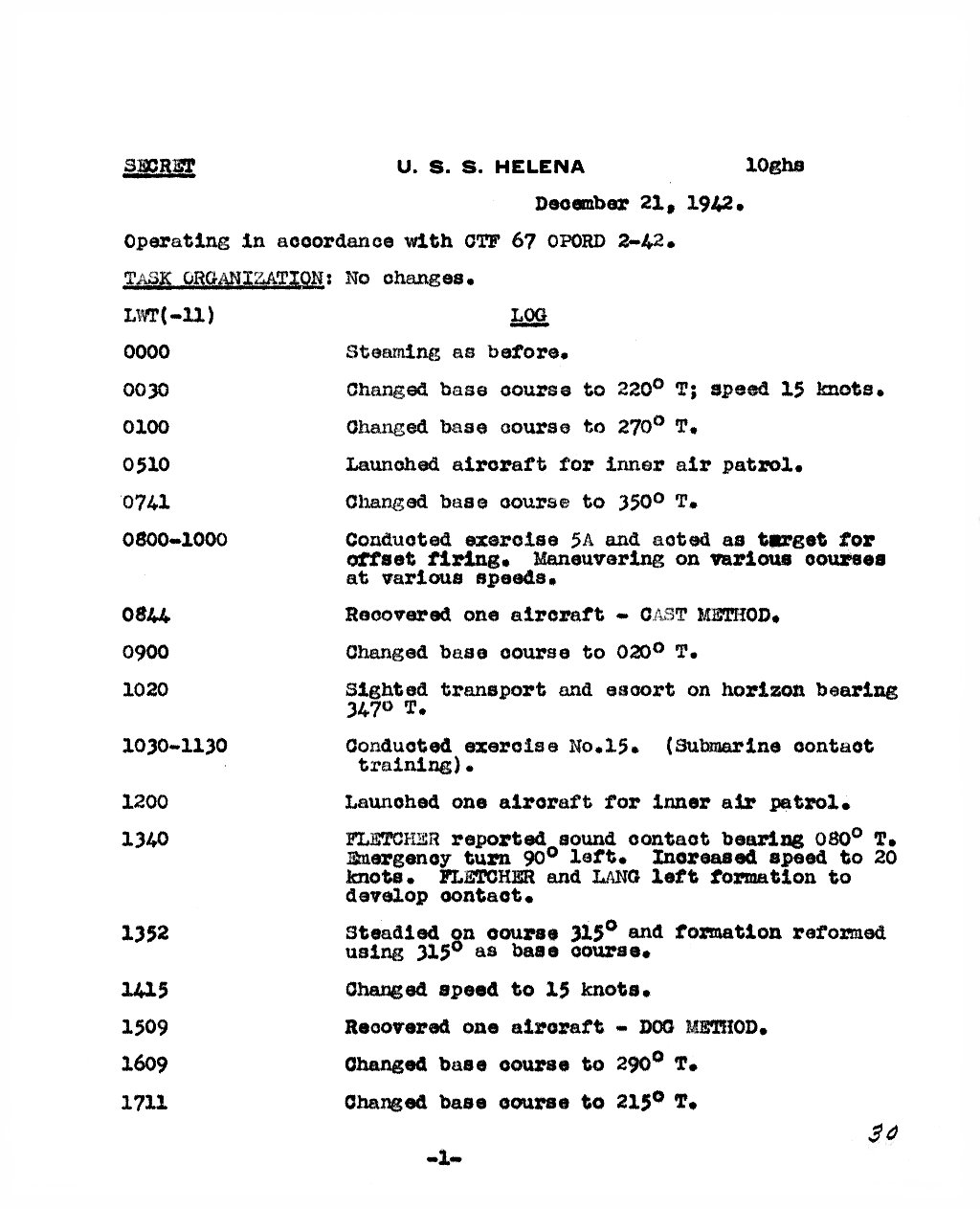
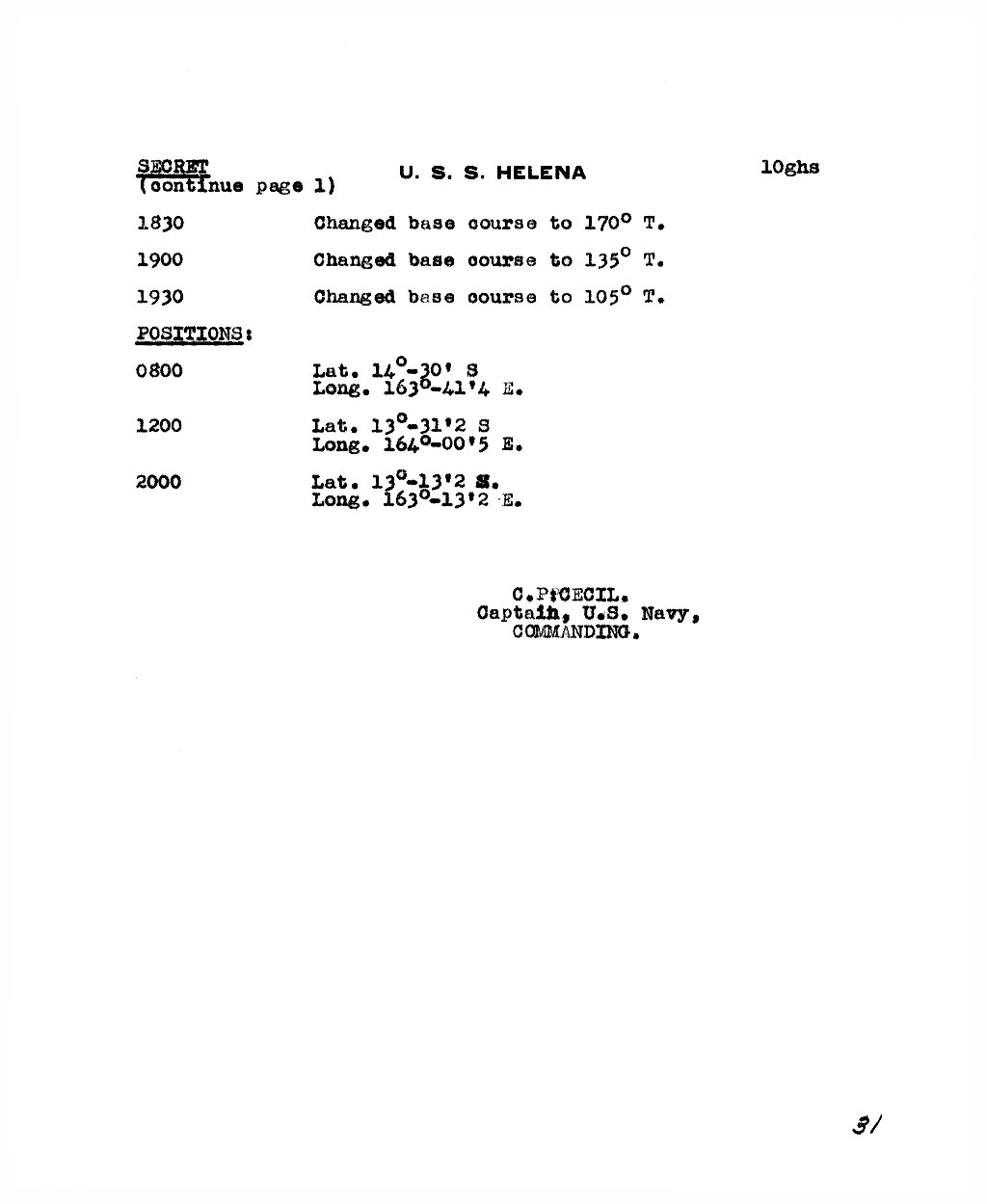
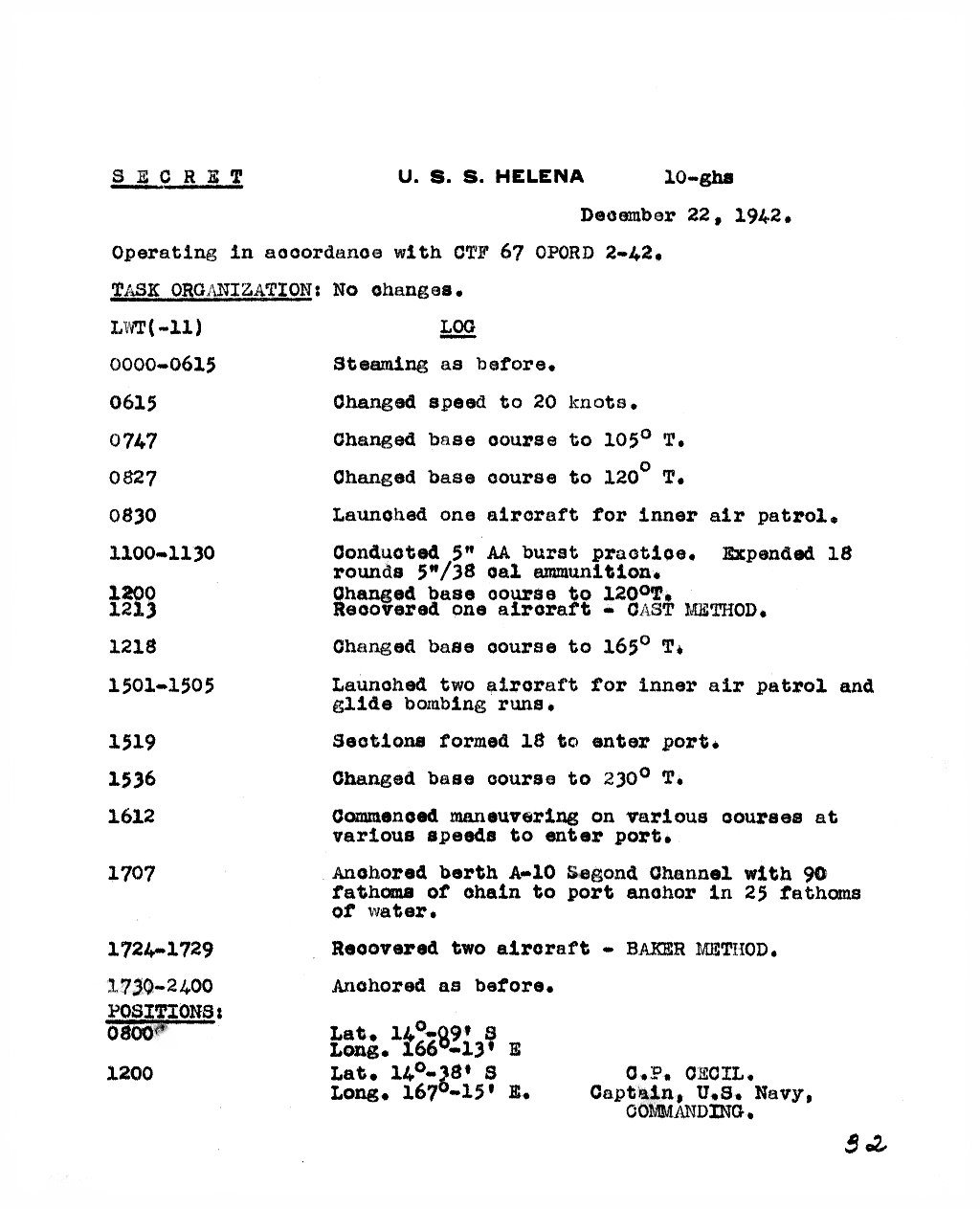
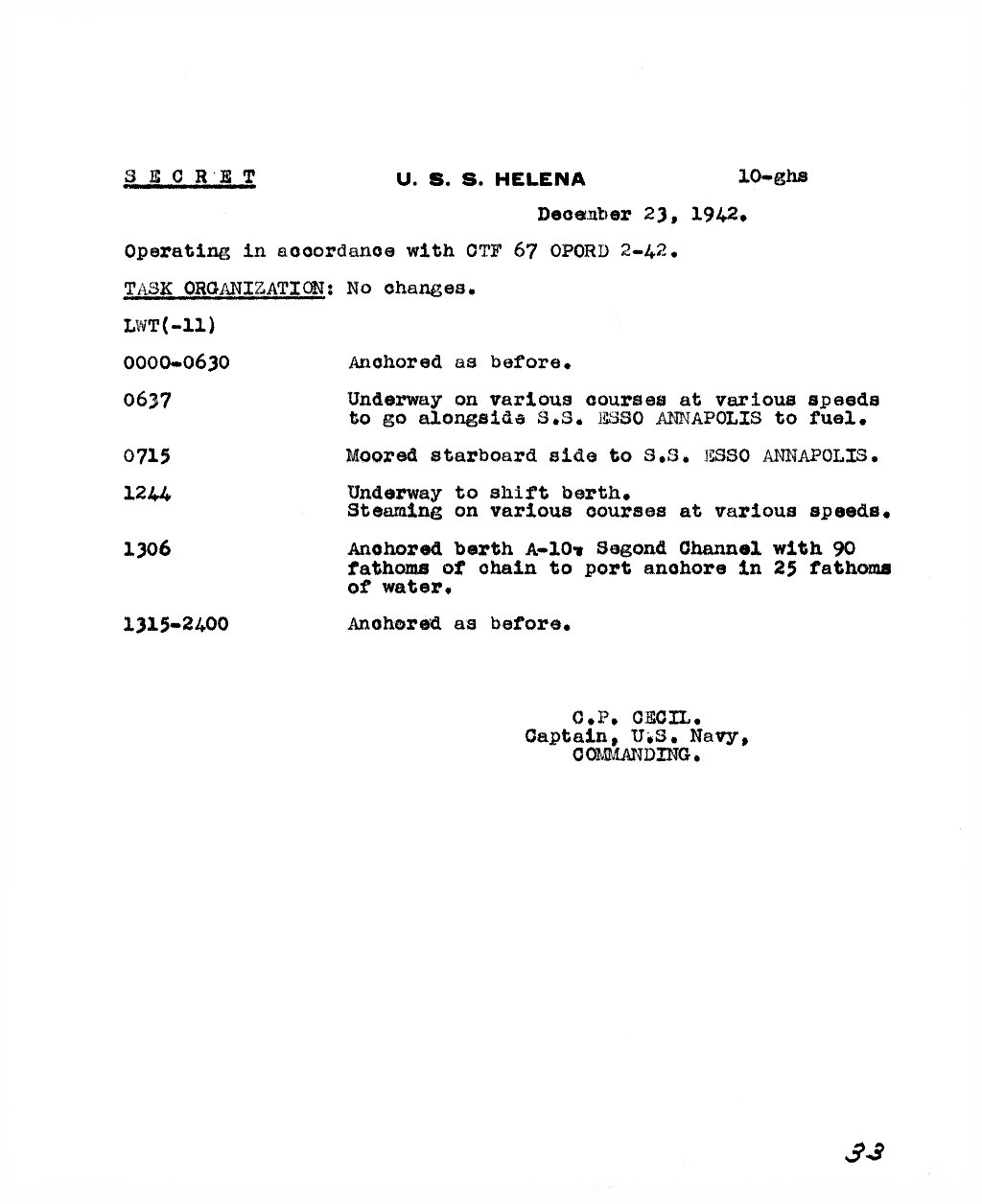
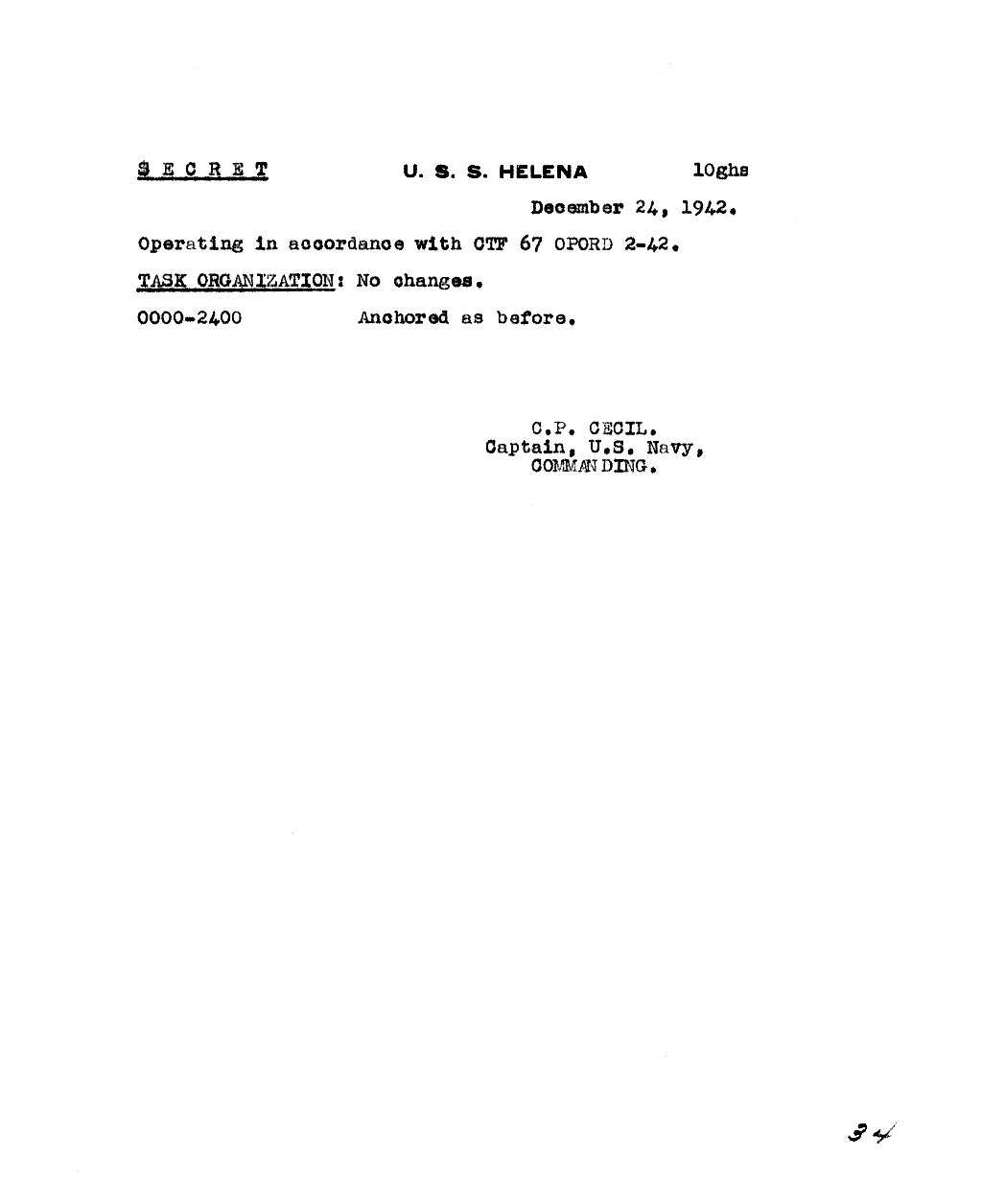
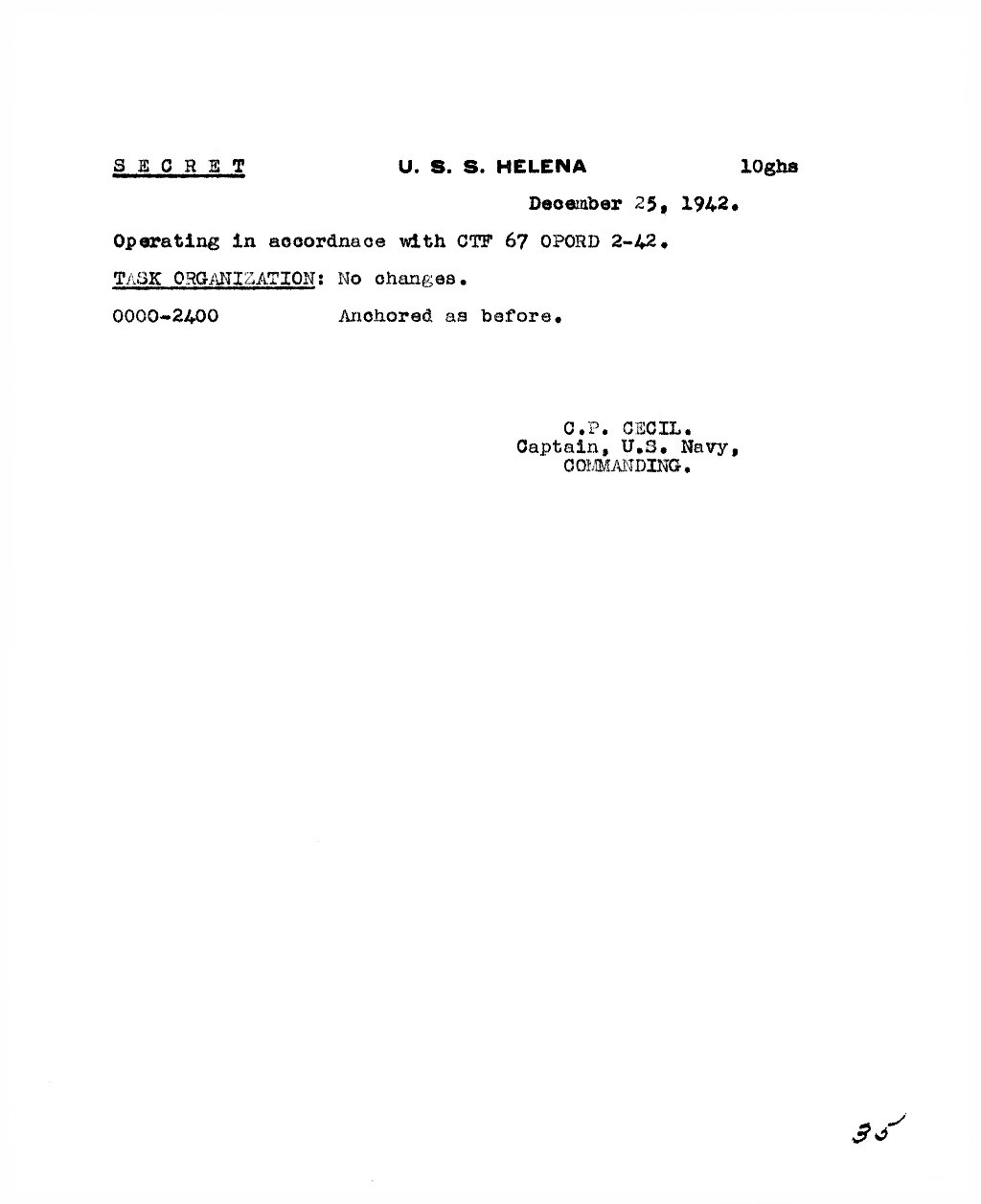
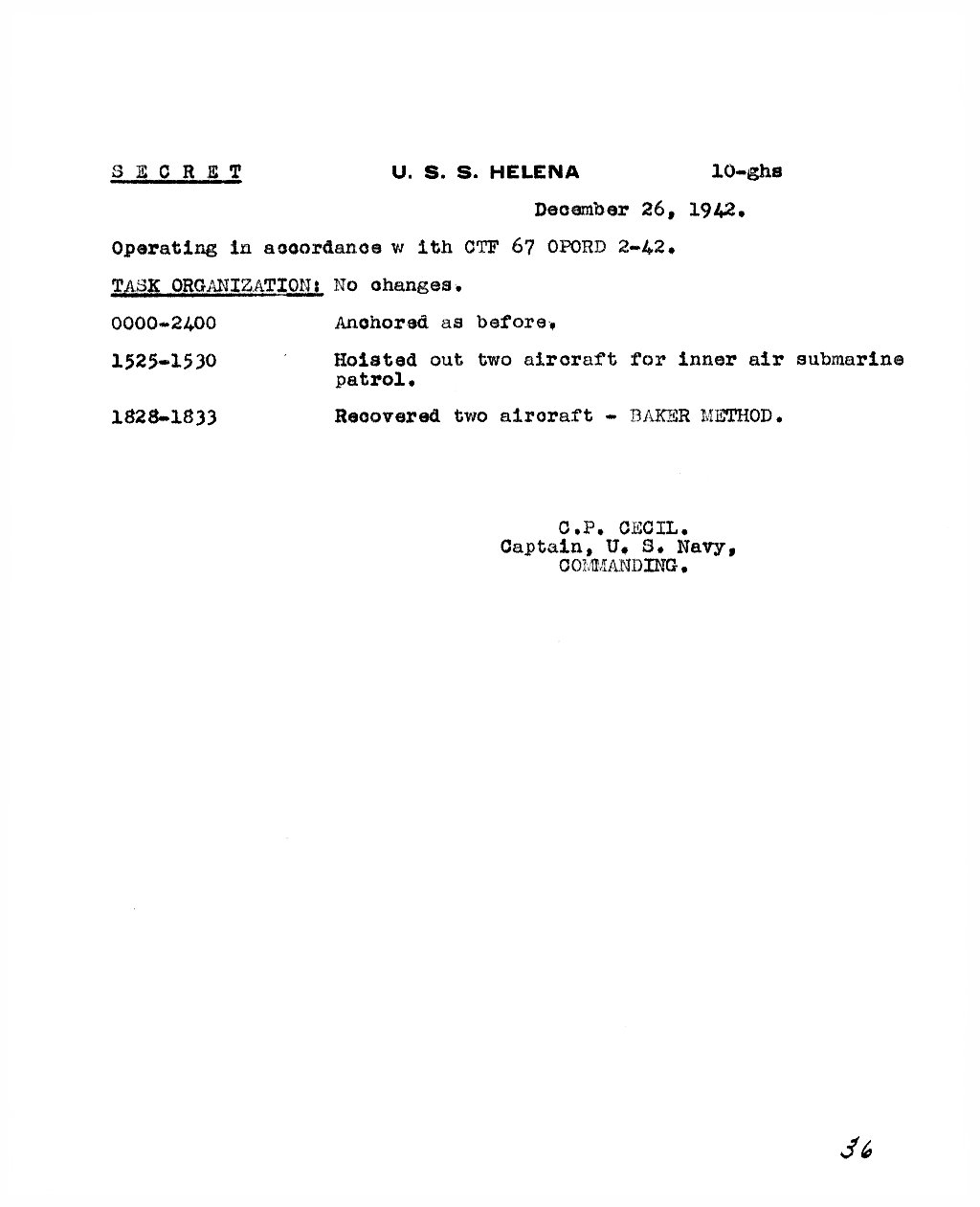
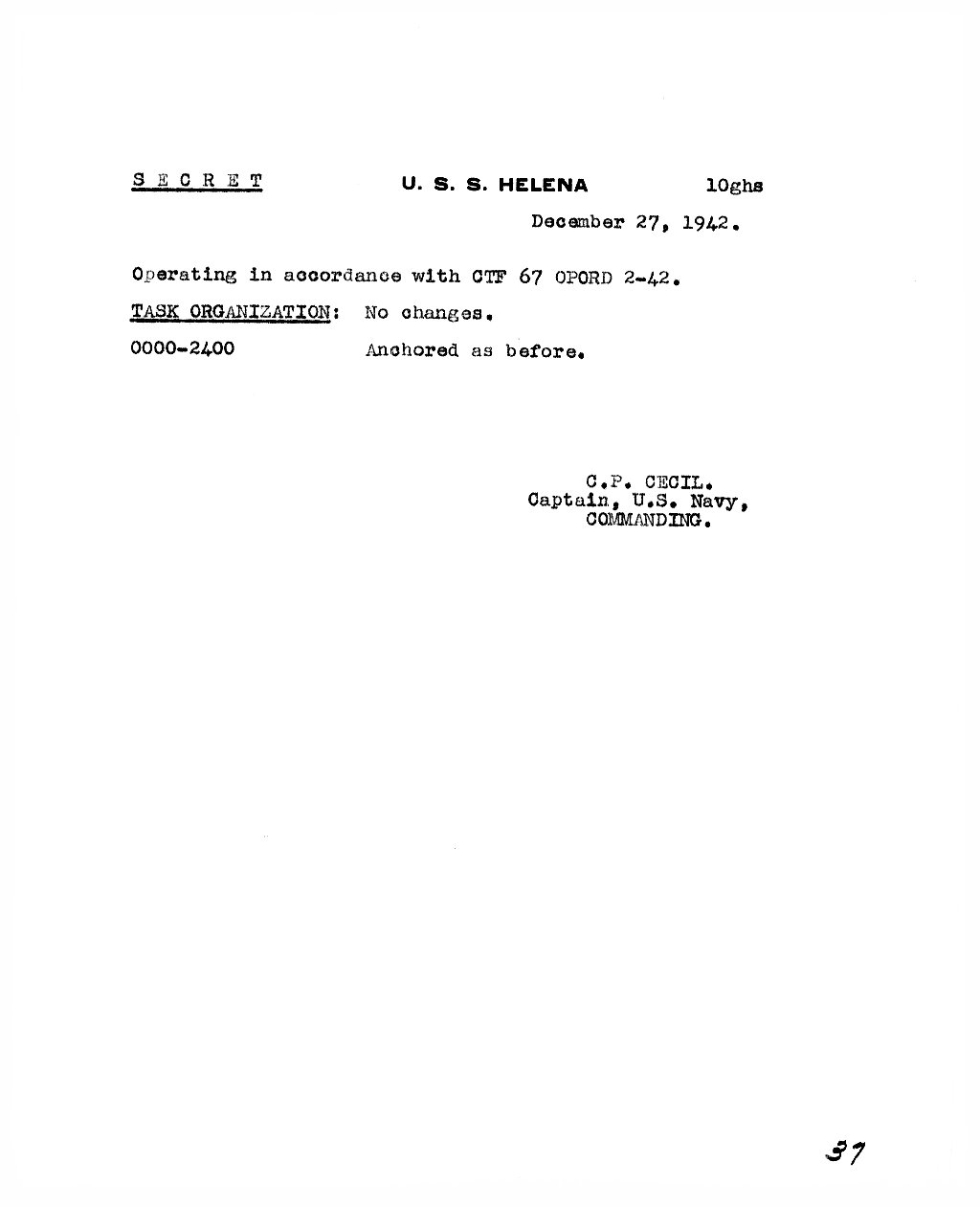
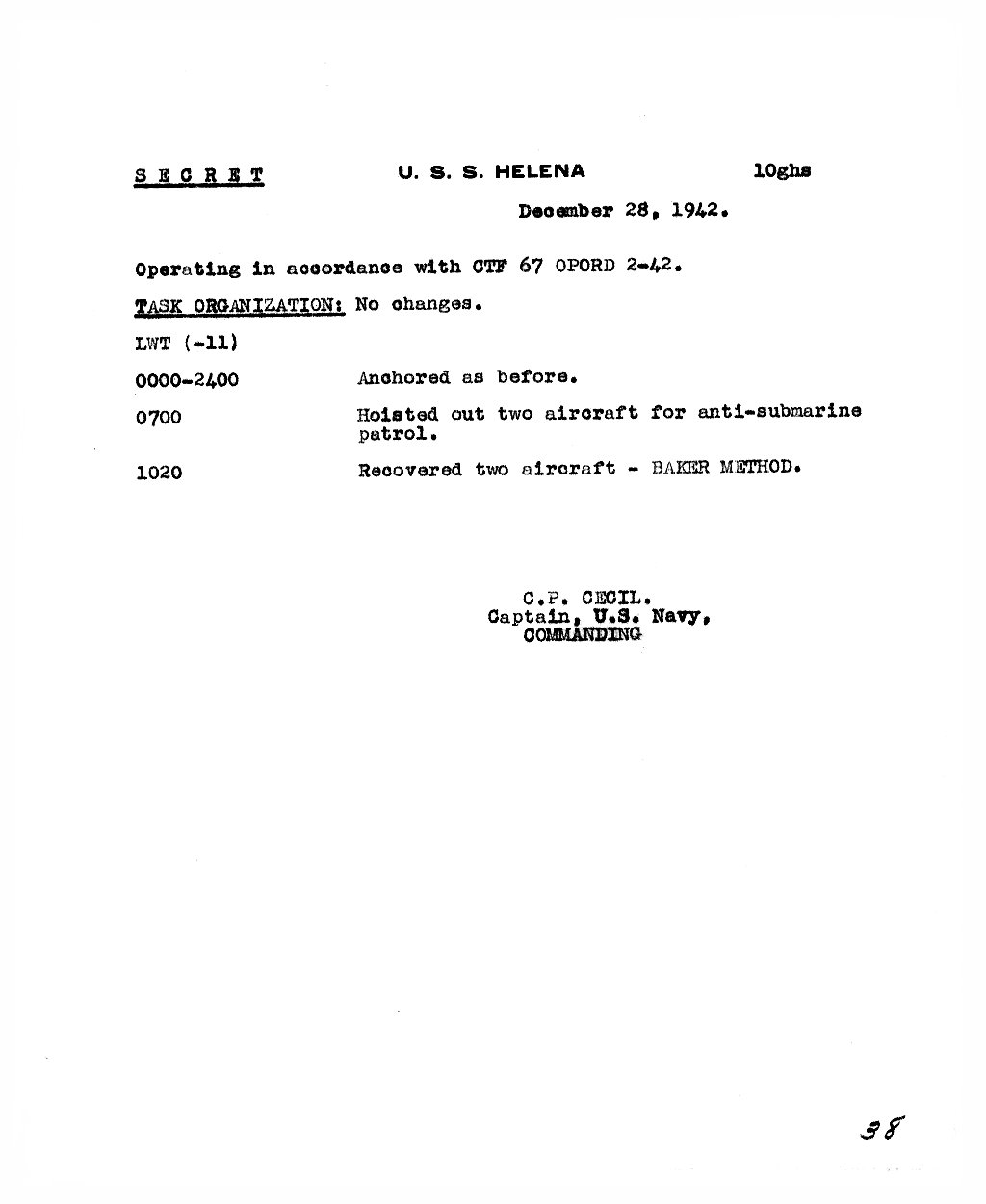
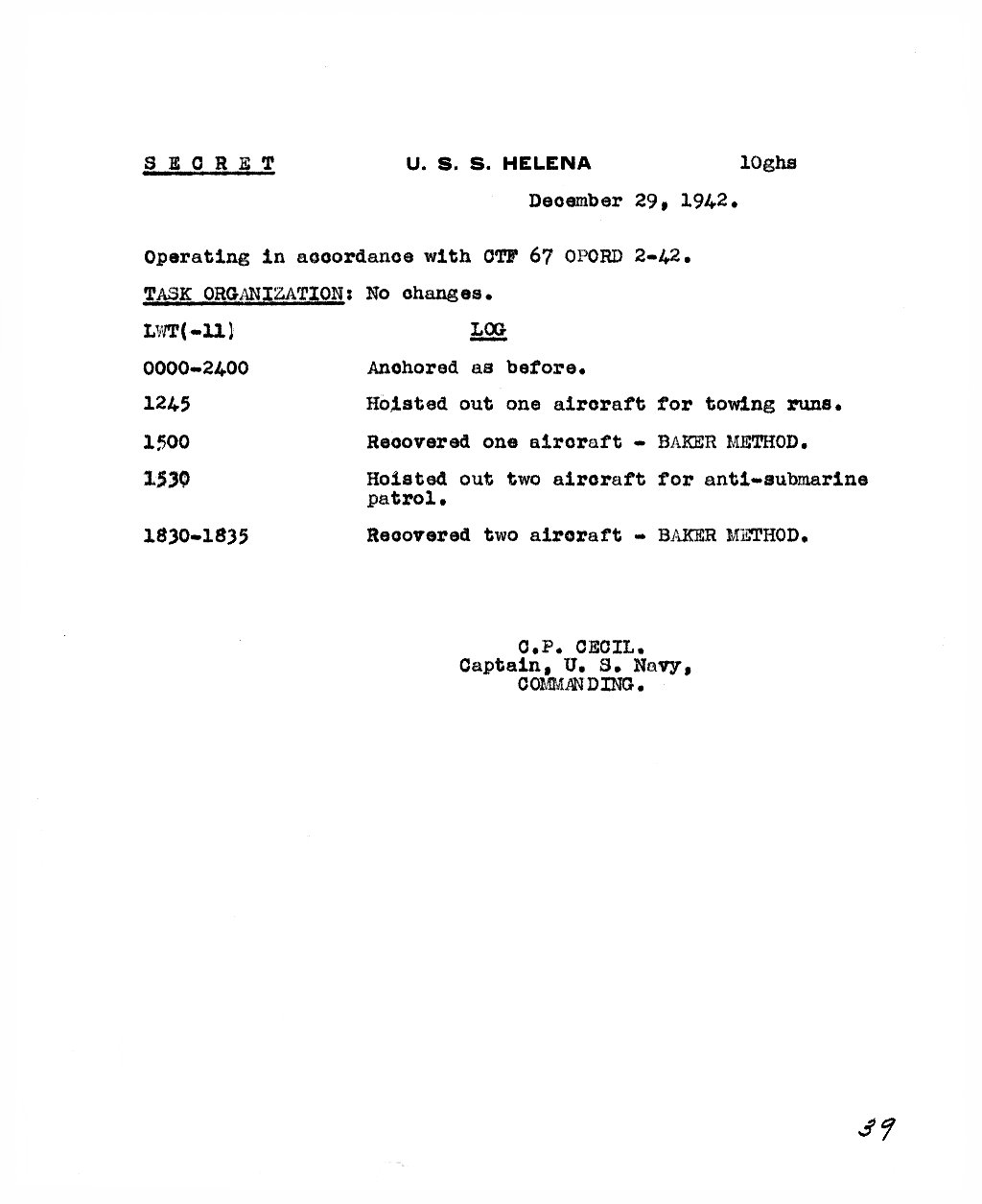
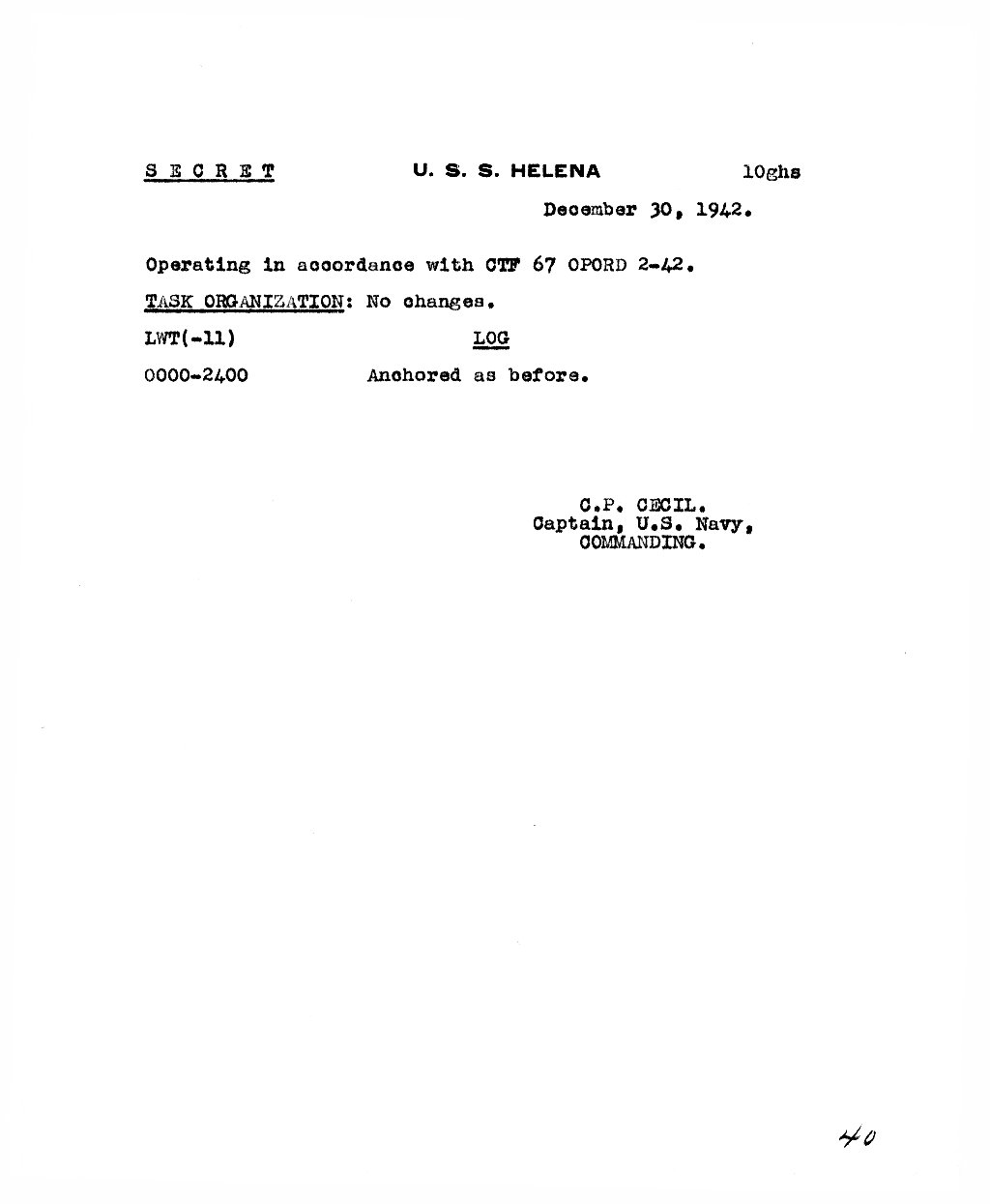
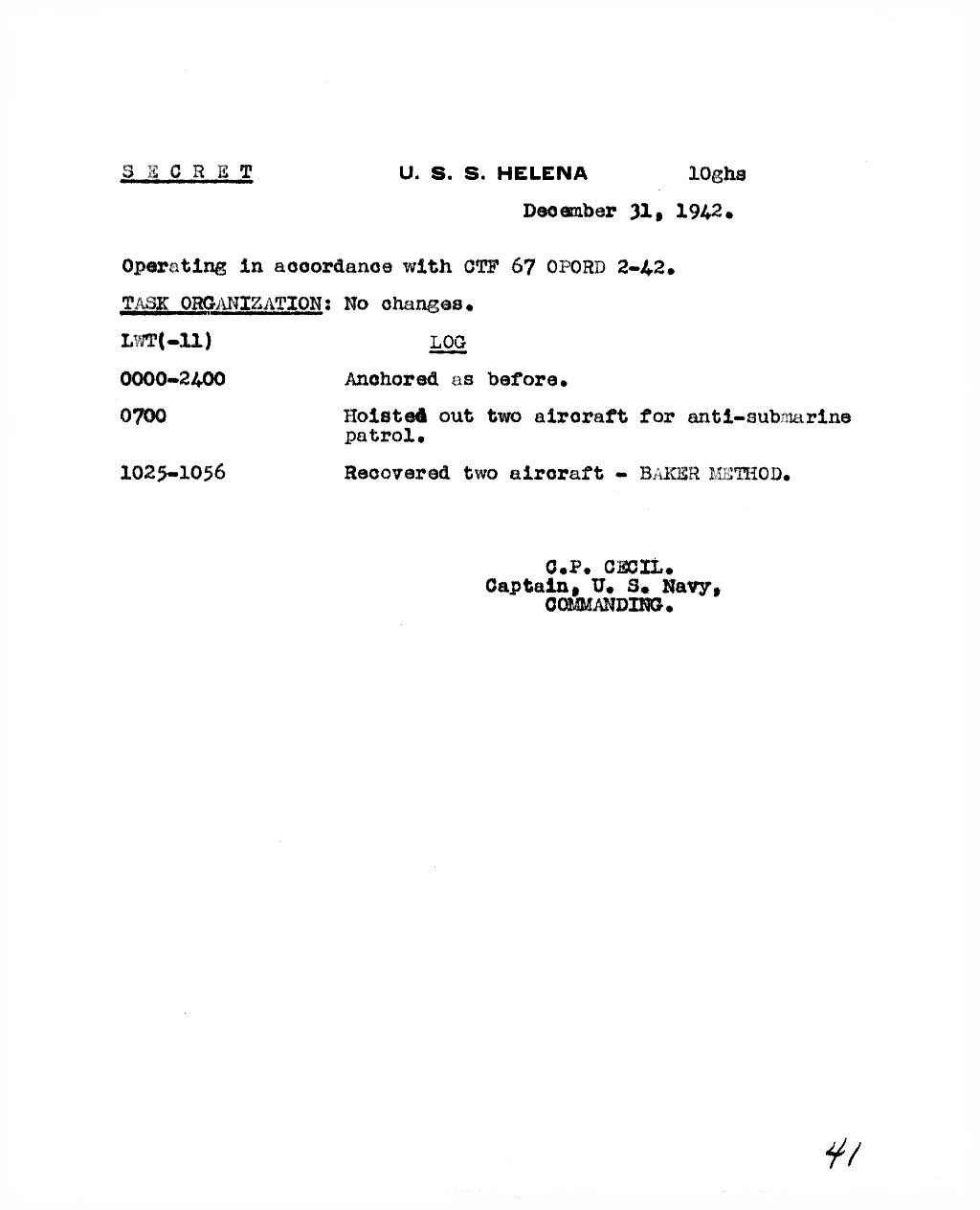
The following pictures are of ships that sailed with the USS Helena CL-50 during WWII.
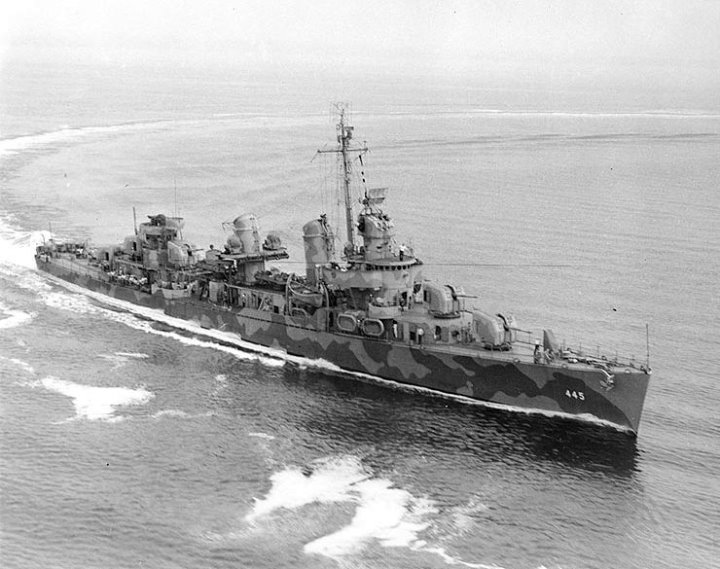
USS Fletcher (DD/DDE-445), named for Admiral Frank Friday Fletcher,
Fletcher was laid down by the Federal Shipbuilding and Dry Dock Company,
Fletcher retired to replenish at Espiritu Santo, arriving the day after the battle, and |
.jpg)
USS Honolulu (CL-48) of the United States Navy was a Brooklyn-class light cruiser active
Honolulu sailed from Espiritu Santo in the New Hebrides Islands to intercept a Japanese Navy
Honolulu operated out of Espiritu Santo in early 1943 with Task Force 67 (TF 67) in an attempt to |
.jpg)
USS Louisville (CA-28) – a Northampton-class heavy cruiser – was the third ship of the
On 11 November, the cruiser departed San Francisco for Pearl Harbor, continuing, after a few |
.jpg)
USS Saufley (DD/DDE/EDDE-465), a Fletcher-class destroyer, was a warship of the United States
Saufley was laid down on 27 January 1942 by the Federal Shipbuilding and Dry Dock Co., Kearny,
Following shakedown off northern New England, Saufley made several coastal escort runs and then |
.jpg)
The first USS Lang (DD-399) was a Benham-class destroyer in the United States Navy during
Lang was laid down by the Federal Shipbuilding & Dry Dock Company, Kearny, New Jersey,
As flagship for DesDiv 15, part of TF 18, Lang departed San Diego 1 July to join in shore |
.jpg)
USS Drayton (DD-366) was a Mahan-class destroyer in the United States Navy before and
Drayton sailed from Pearl Harbor 17 November 1942 for action in the Solomon Islands. |
.jpg)
The third USS Lamson (DD-367) was a Mahan-class destroyer of the United States Navy;
On 30 November, Lamson joined Rear Admiral Wright’s Task Force 67 during the Battle of |